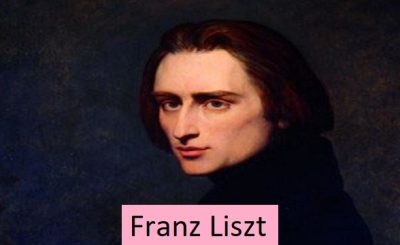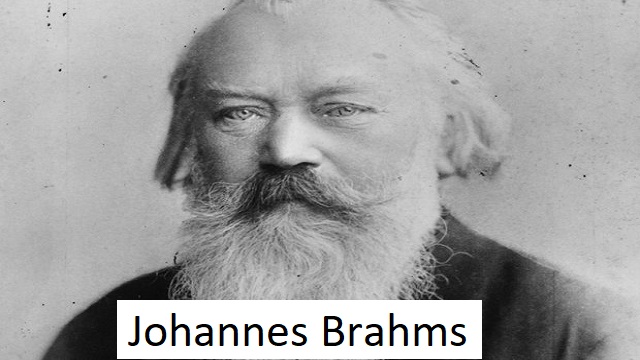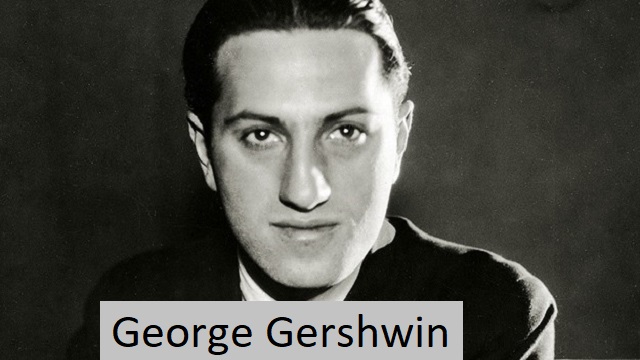Wilhelm Richard Wagner, May 22, 1813 Leipzig – February 13, 1883 Venice, Italy, expanding on his findings or responding to them. His major works include The Flying Dutchman (1843), Tannhäuser (1845), Lohengrin (1850), Tristan und Isolde (1865), Parsifal (1882), and his great tetralogy The Ring of the Nibelung (1869-1876).

Childhood
Wagner’s artistic and theatrical beginnings (several older sisters became opera singers or actresses) were a major formative influence. Impulsive and honest, he was a lazy scholar at the Kreuz Schule in Dresden and the Nikolai Schule in Leipzig. But he went to concerts, taught himself piano and composition, and read plays by Shakespeare, Goethe, and Schiller.
Fascinated by the charm of his student life, Wagner entered the University of Leipzig, but because he did not complete the preliminary course, he entered with less privileged training. Although he lived wild, he was serious about composing. Because of his impatience with all academic techniques, he spent only six months obtaining a basic thesis from Theodor Wenlig, cantor of the Thomas school; But his real training was an intense personal study of the scores of the masters, above all Beethoven’s quartets and symphonies. His Symphony in C major was performed at the Gewandhaus Concerts in Leipzig in 1833. Leaving university that year, he spent the summer as an opera coach in Würzburg. A beautiful story by Carlo Gozzi. After an unsuccessful opera production in Leipzig and falling in love with one of the company’s actresses, Wilhelmine (Minna) Planer, whom he married in 1836, he became the conductor of the Magdeburg Regional Theater Company. His only performance of his second opera, Das Leibesverbot, based on Shakespeare’s Measure for Measure, was a disaster. In 1839 he decided to carry out his long-held plan to escape creditors and achieve fame in Paris, but his three years there were disastrous. Despite the advice of the influential German-Galician composer Giacomo Mirbeer, Wagner was unable to break into the closed circle of the opera house. Living with a colony of poor German artists, he escaped starvation through music journalism and piracy. Nevertheless, he completed Rienzi (based on Bulwer-Lytton’s novel) in 1840 and wrote his first major opera, The Flying Dutchman, in 1841. In 1842, at the age of 29, he happily returned to Dresden, where on 20 October a triumphant performance of Rinzi’s return took place. -An Italian tradition similar to Rinzi, I was surprised by the innovative way the new opera integrates music and dramatic content. However, Wagner was appointed director of the Court Opera, a post he held until 1849. On 19 October 1845 Tannhäuser (like all his future works on Germanic mythology) was well received, but soon proved to be a constant attraction. Subsequently, each new release has achieved general popularity, despite the continued hostility of many critics. The refusal of the Dresden Court Opera authorities to perform his next opera, Lohengrin, was not based on technical reasons. On the contrary, they were alienated by the administrative and technical reforms planned by Wagner. His proposals would have removed control of opera from the court and created a national theater whose productions would be selected by the Guild of Playwrights and Composers. Concerned with ideas of social renewal, he was then involved in the German Revolution of 1848-1849. Wagner wrote a series of articles calling for revolution and took an active part in the Dresden uprising in 1849. When the uprising failed, an arrest warrant was issued for him and he fled Germany as he could not attend the premiere of Lohengrin in Weimar on August 28, 1850, given by his friend Franz Liszt.
Exile
Wagner was not to produce any more new works for the next fifteen years. By 1858 he was living in Zurich, composing, writing letters, and conducting (in 1855 he conducted the concerts of the London Philharmonic Society [later the Royal Philharmonic Society]). He had already studied the Siegfried myth and Norse mythology as a possible basis for the opera, and had written an “operatic poem”, Siegfried Todd (The Death of Siegfried), in which he imagined Siegfried as a new kind of man born after the onset of the successful revolution he had hoped for, he has now written a number of prose volumes on the revolution social and artistic. Between 1849 and 1852 he produced seminal prose works: Die Kunst und die Revolution (Art and Revolution), Das Kunstwerk der Zukunft (Future Works of Art), Ein Mittelung en meine Fründe (My friend Communication) and Oper und Drama ( opera and drama). The latter outlined a new and innovative type of musical stage work. In fact, it is a colossal task that he is involved in. By 1852 he had added three more poems to the poems of Siegfried Todd, collectively called Der Ring des Nibelungen, which formed the basis of a tetralogy of musical drama: Das Rheingold). ) ; Warkyure (Barkyure); and Siegfrieds Tod (The Death of Siegfried), later called Götterdämmerung.
Jihwan reveals Wagner’s mature style and method. At last he found his bearings in a time when his thoughts were on social issues. In anticipation of the imminent establishment of a socialist state, he predicted the disappearance of opera as an artificial entertainment for the elite and the emergence of a new type of theatrical musical work for the masses, which would express the self-realization of free humanity. This new work was later called a “musical drama”, although Wagner never used the term, preferring “drama”.
Wagner’s new art form would be a verse drama which, when set to a continuous symphonic vocal tapestry, would find full expression as a musical drama. This tapestry would be woven from basic thematic ideas known as a Leitmotif (from the German leitmotiv, literally “main motif”, dominant singular). These musical figures emerge naturally as expressive vocal phrases sung by the characters and created as “reminders” by the orchestra to express dramatic and psychological developments.
This concept is fully embodied in The Ring, except that the motif does not always appear as a vocal phrase, but is often introduced by the orchestra to represent a character, emotion or event in a drama. Using this method, Wagner immediately reached his extraordinary stature. His style was infinitely integrated and profound, and he was able to fill his operas from beginning to end with powerful and distinctive music. With the exception of a few moments in Das Rheingold, his old weaknesses, formal and stylistic, are completely gone, and with them the last vestiges of the old “opera.” By 1857, his style, enriched by Liszt’s symphonic lyric drive and new harmonic subtleties, produced Das Rheingold, Die Walkure, and the second act of Siegfried. But now he’s stopped working on The Ring. Not being able to climb this giant in the near future has stalled his career and given him “normal” work with immediate production. His optimistic social philosophy also succumbed to the metaphysical pessimism that the world abandoned by discovering the philosophy of Arthur Schopenhauer. The result was Tristan und Isolde (1857–1859), whose hopeless love for crystallizer Mathilde Wesendonk, wife of a wealthy patron, led to his divorce from his wife Minna.
Life in Zurich became very embarrassing because of the Bessendonck incident, and Wagner completed Tristan in Venice and Lucerne, Switzerland. This work revealed a new subtlety in the use of leitmotifs, which he had used mainly in Das Rheingold and Die Vaqure to explain the action of the play. The influence of Schopenhauer’s doctrine of the supremacy of music among the arts led him to tilt the expressive balance of musical drama more towards the musical: leitmotifs were no longer fully identifiable with their dramatic sources, but the direction of the music itself. In action with greater psychological complexity. they did free association
Richard Wagner’s return from exile
In 1859 Wagner went to Paris, and the following year he unsuccessfully produced a revised version of Tannhäuser. However, in 1861 an amnesty allowed him to return to Germany. From there he went to Vienna, where he heard Lohengrin for the first time. He remained in Vienna for about a year, touring extensively as a conductor and awaiting the scheduled production of Tristan. When this work was never produced, the performer being baffled by the innovative stylistic innovation, Wagner commissioned a second “normal” work, the comic opera Die Meistersinger von Nürnberg (The Meistersingers of Nuremberg). Musical Drama The old “opera” elements are evident. However, by 1864 his extravagant spending and habit of borrowing and living led to financial disaster: he had to flee Vienna to avoid imprisonment for debt. He arrived in Stuttgart penniless, a 51-year-old man with no future, almost at the end of his rope. Something like a miracle saved him. He had always made loyal friends because of his charming personality, his obvious genius and his artistic integrity, and now a new friend of great influence came to his aid. In 1864, Ludwig II, a young man of 18, ascended the throne of Bavaria. He was a fanatical admirer of Wagner’s art, and after reading the poem Der Ring (published the previous year with a request for sponsorship) invited Wagner to complete the work in Munich.
The king housed them in a villa, and for the next six years there were successful productions in Munich of all of Wagner’s works that are still performed today, including the world premieres of “Tristan” (1865), “De Meistersinger” (1868) , “Das Rheingold” (1869) and Die Walküre (1870) – the first two films directed by the great Wagner conductor Hans von Bulow. A new theater in Munich with an attached music school was originally planned, but this was not realized due to the resistance caused by Wagner’s lifestyle. Despite his royal duties, he was not only constantly in debt, but also attempted to interfere in the government of the kingdom. He also fell in love with von Bülow’s wife Cosima, Liszt’s daughter. She had three children, Isolde, Eva and Siegfried, before divorcing in 1870 and marrying Wagner the same year. For all these reasons Wagner thought it best to leave Munich as early as 1865, but he did not lose his friendship with the king who placed him in Tribuschen on Lake Lucerne. Last Years in Bayreuth by Richard Wagner
In 1869 Wagner resumed work on the Ring, which has now reached its otherworldly end. It had been agreed with the king that the tetralogy should be performed in its entirety for the first time in Munich, but Wagner broke the agreement because he was convinced that a new kind of theater would have to be built for this purpose. After scouting for a suitable location in Bayreuth, Bavaria, he toured Germany, giving concerts to raise funds and encourage clubs to support the plan, and in 1872 the foundation stone was laid. In 1874 Wagner moved into a house in Bayreuth which he named Wanfried (“Peace of Illusion”). And despite enormous technical, administrative and financial difficulties, the entire gigantic project was finally realized and then paid off with royalties. The ring gave its first successful full performance at the new Festspielhaus in Bayreuth on August 13, 14, 16 and 17, 1876.
Wagner spent the rest of his life at Wahnfried, visiting London in 1877 to give a series of successful concerts, then taking several to Italy. His last work was composed during these years, the spiritual festival Parsifal, which he began in 1877 and performed at Bayreuth in 1882; he also dictated his autobiography, Ma vie, which he had begun in 1865 to his wife. At the height of his fame, he died of a heart attack and was buried in Winifred’s mausoleum, which he had prepared himself. Since then, except for interruptions caused by the First and Second World Wars, the Festspielhaus has organized annual festivals of works by Wagner.






